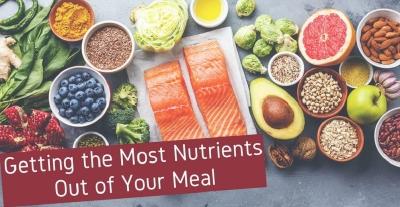Free Link Directory Website
Advertisements

What is Nutrient Density?
If you’ve been paying attention to nutrition news lately, you may have heard the term “nutrient density” floating around. Simply put, nutrient density is a measure of how the nutrients contained in a food stack up against its other qualities – for example, its total calorie content. There are formulas to calculate nutrient density, and with a little information and math, you can determine this exact ratio for any food you eat.
Obviously, a food that gives you a lot of nutrients when compared to its calorie content is a healthier choice than a food that gives you only a few nutrients but a lot of calories. As you might expect, foods that are low in nutrient density are often said to provide empty calories – meaning that they give you lots of calories, but little or no nutrition. If you want to eat nutritiously or lose weight, you need to choose nutrient dense foods.
When you eat nutrient dense foods, you usually get a wide variety of nutrients, including vitamins and minerals, fiber, phytonutrients and a good amount of protein and healthy fats as well. Typically, the closer a food is to its natural state and the less processed it is, the more of its original nutritional content is retained and the more nutrient dense it will be.
As an example, let’s compare one slice of white bread to one slice of 100% whole wheat bread. In terms of calories, the two breads are essentially equivalent, averaging around 70 calories. Both contain about the same amount of carbohydrates – 11.97 grams and 11.56 grams respectively. However, the whole wheat bread has three times the amount of fiber as the white bread – you get more nutrient bang for your buck when you choose the whole wheat product.
For another example, let’s take a look at rice in a natural form – one cup of cooked, long grain brown rice – and in a very processed form; rice krispie squares made from puffed rice cereal with butter and marshmallows. The brown rice has 216 calories, while the rice treat only has 153 calories. However, the rice will give you just over five grams of protein, while the rice treat only has 1.26 grams. The rice will also give you substantially more fiber – 3.5 grams versus .2 grams for the rice treat.
In addition, eating the bowl of rice will give you 20 mgs of calcium, while the rice treat will only give you one. You also get considerably more magnesium and phosphorus with the bowl of whole rice – 84 mgs versus five mgs on the magnesium, and 162 mgs versus 16 mgs on the phosphorus, respectively.
So does the rice treat ever come out ahead? Surprisingly, yes. From the rice treat you’ll get 33 mcg of folic acid, while the brown rice contains none, as well as 6.025 mg of niacin in the treat, whereas the brown rice only contains 2.9. This is because in the United States, grain products are required to be fortified with B vitamins to help prevent birth defects. The B vitamins are added after the fact and aren’t a natural component of the food.
As you can see, there’s a lot to be gained by eating foods closer to their natural state. Not only do they contain more nutrients for their calories, but they’re also generally more satisfying. A bowl of whole grain oatmeal, for example, is far more satisfying than a single oatmeal cookie. In much the same way, an apple is more satisfying and more nutrient dense than a glass of apple juice. If you choose nutrient dense foods, not only will you be more satisfied overall, but you’ll also be giving your body more of what it needs to be healthy.
Copyright © 2022 - All Rights Reserved.

